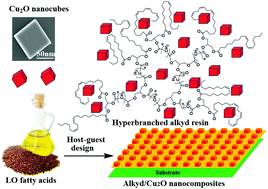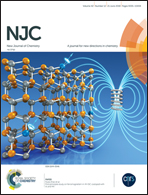Linseed oil-based alkyd/Cu2O nanocomposite coatings for surface applications
Abstract
An environment-friendly series of linseed-oil (LO)-based alkyd/Cu2O nanocube nanocomposite coatings was fabricated by a solution-casting method. An easy A2 + B3 approach was used to synthesize a hyperbranched polyester using natural and functional monomers. LO alkyd resin with a hyperbranched architecture was developed by the polyesterification of polyester and unsaturated fatty acids of LO. Hyperbranched alkyd polymers offer many advantages, such as reduced viscosity, multifunctional terminals, and absence of gelation. Controlled synthesis of 60–80 nm Cu2O nanocubes and a cubic morphology was carried out using a wet chemical technique at RT without using any surfactant or template. Different concentrations of single-crystal Cu2O nanocube fillers bound mainly with {100} facets were incorporated into the as-synthesized LO alkyd resin to investigate the effects of nanofiller dispersion on physicomechanical and anticorrosion properties. The surface nonwettability and salt-fog anticorrosive characteristics of the tailored unfilled and alkyd/Cu2O nanocube composites were investigated. Different techniques were used to investigate the composites’ thermal and mechanical features. For all experiments, the maximum improvements in mechanical and anticorrosion properties were achieved by increasing the Cu2O nanofiller loading concentrations up to 0.5%.



 Please wait while we load your content...
Please wait while we load your content...